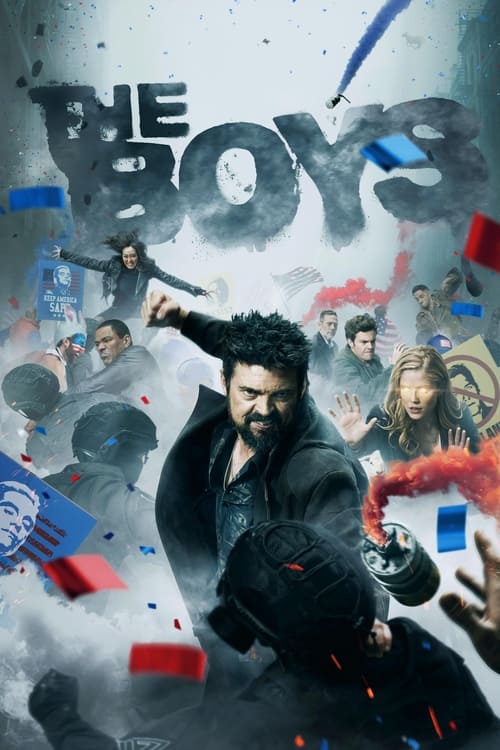
Ask Your Own Question
What is the plot?
In "Histories & Lore: The Dance of Dragons," the narrative begins with a recounting of the Targaryen civil war known as the Dance of Dragons, which takes place approximately 170 years before the events of "Game of Thrones." The conflict arises from a succession crisis following the death of King Viserys I Targaryen. The king's death leads to a bitter dispute over the Iron Throne between his children, Rhaenyra Targaryen and Aegon II Targaryen.
Rhaenyra, the king's firstborn, is named his successor, but her half-brother Aegon II, supported by a faction of the court, claims the throne for himself. This division sets the stage for a brutal civil war, as both sides gather their supporters and dragons. The narrative details the political maneuvering and alliances formed, highlighting the tensions between the two factions.
As the war escalates, Rhaenyra's supporters, including her half-brother Daemon Targaryen, rally to her cause. They engage in strategic battles, utilizing their dragons to gain the upper hand. The episode vividly describes the ferocity of these dragon battles, showcasing the destructive power of the Targaryen dragons as they clash in the skies above Westeros.
The conflict leads to significant betrayals and shifting allegiances. Key characters, such as Lord Corlys Velaryon and his wife Rhaenys Targaryen, play pivotal roles in the unfolding drama. Rhaenys, initially a supporter of Rhaenyra, finds herself caught in the crossfire of the war, and her decisions impact the course of the conflict.
The episode also delves into the tragic consequences of the war, including the loss of life and the devastation wrought upon the realm. The emotional toll on the characters is palpable, as family members turn against one another, and the once-united Targaryen dynasty begins to fracture irreparably.
As the war progresses, Rhaenyra's position becomes increasingly precarious. After a series of battles, Aegon II's forces gain the upper hand, leading to Rhaenyra's eventual capture. The episode portrays her desperation and determination to reclaim her birthright, even as the odds stack against her.
In a climactic moment, Rhaenyra is betrayed by those she once considered allies. The episode captures her emotional turmoil as she faces the reality of her situation, culminating in her tragic end. The Dance of Dragons ultimately concludes with the Targaryen family in disarray, setting the stage for the eventual decline of their dynasty.
The episode ends with a somber reflection on the legacy of the Dance of Dragons, emphasizing the themes of ambition, betrayal, and the high cost of power. The visual imagery of the dragons, the battles, and the emotional weight of the characters' decisions leave a lasting impact, encapsulating the tragic nature of this pivotal moment in Westerosi history.
What is the ending?
In the episode "Histories & Lore: The Dance of Dragons," the ending recounts the tragic conclusion of the Targaryen civil war, known as the Dance of Dragons. The conflict results in the near-total destruction of the Targaryen dragons and the death of many key figures, including Aegon II Targaryen, who is ultimately defeated and dies in a brutal manner. Rhaenyra Targaryen, who initially claims the Iron Throne, also meets a grim fate, leading to the end of her lineage. The episode emphasizes the devastating consequences of ambition and the fragility of power.
As the narrative unfolds, we begin with the backdrop of the Targaryen civil war, a conflict that tears the realm apart. The Dance of Dragons is marked by fierce battles between the factions led by Rhaenyra Targaryen and her half-brother Aegon II. The episode paints a vivid picture of the chaos that ensues, with dragons soaring through the skies, their roars echoing across the land, and the flames of war consuming everything in their path.
Scene by scene, we witness the pivotal moments of the war. Rhaenyra, initially confident in her claim to the throne, faces betrayal and loss. Her supporters dwindle as the war drags on, and the toll of the conflict weighs heavily on her spirit. The emotional turmoil is palpable as she grapples with the deaths of her children and the destruction of her allies. Each loss chips away at her resolve, leaving her isolated and desperate.
Meanwhile, Aegon II, driven by his desire for power, becomes increasingly ruthless. His actions lead to the downfall of many, including his own supporters. The episode captures his internal struggle as he grapples with the consequences of his ambition. The once-proud Targaryen prince becomes a figure of tragedy, consumed by the very war he sought to win.
As the war reaches its climax, the dragons, once symbols of Targaryen strength, become instruments of devastation. The episode highlights the tragic fate of these magnificent creatures, showcasing their deaths in battle and the sorrow of their riders. The loss of the dragons signifies the end of an era for House Targaryen, leaving the family vulnerable and fractured.
In the final scenes, Rhaenyra's downfall is sealed as she is betrayed by those she trusted. Captured and brought before Aegon II, her fate is sealed in a brutal act of vengeance. The episode does not shy away from the horror of her execution, emphasizing the brutality of the power struggle. Aegon II's victory is hollow, as he is left to rule over a kingdom in ruins, haunted by the ghosts of those who perished in the war.
The Dance of Dragons concludes with the Targaryen legacy in tatters. The episode leaves viewers with a sense of the futility of ambition and the devastating cost of civil war. The once-mighty House Targaryen is left diminished, a shadow of its former self, as the Iron Throne remains a symbol of both power and tragedy. The fates of Rhaenyra and Aegon II serve as a poignant reminder of the destructive nature of their conflict, forever altering the course of Westerosi history.
Is there a post-credit scene?
In the episode "Histories & Lore: The Dance of Dragons," there is no post-credit scene. The episode focuses on the historical events surrounding the Targaryen civil war known as the Dance of Dragons, detailing the conflict between the factions led by Princess Rhaenyra Targaryen and her half-brother Aegon II Targaryen. It provides a rich narrative filled with lore, character motivations, and the emotional stakes of the war, but it concludes without any additional scenes or content after the main feature.
What were the main causes of the conflict known as the Dance of Dragons?
The Dance of Dragons was primarily caused by a struggle for the Iron Throne between the children of King Viserys I Targaryen, specifically his daughter Rhaenyra Targaryen and his son Aegon II Targaryen. The conflict was fueled by issues of succession, as Rhaenyra was named heir by her father, but Aegon II's supporters believed that a male heir should take precedence.
How did the dragons play a role in the Dance of Dragons?
Dragons were central to the Dance of Dragons, as both Rhaenyra and Aegon II had their own dragons that they used in battle. The Targaryens' ability to ride dragons gave them a significant advantage in warfare, leading to devastating aerial battles and significant casualties on both sides. The dragons' ferocity and power also heightened the stakes of the conflict.
What were the key battles fought during the Dance of Dragons?
Key battles during the Dance of Dragons included the Battle of Rook's Rest, where Rhaenyra's forces faced Aegon II's, and the Battle of the Gods Eye, which was a climactic confrontation that resulted in the death of several dragons and riders. These battles were marked by intense aerial combat and strategic maneuvers, showcasing the devastating impact of dragon warfare.
What was the fate of Rhaenyra Targaryen after the Dance of Dragons?
After the Dance of Dragons, Rhaenyra Targaryen faced a tragic fate. After being captured by Aegon II's forces, she was executed in a brutal manner, being fed to Aegon II's dragon, Sunfyre. Her death marked a significant turning point in the Targaryen lineage and the ongoing struggle for power within the realm.
How did the Dance of Dragons affect the Targaryen dynasty?
The Dance of Dragons had a profound and lasting impact on the Targaryen dynasty, leading to the near extinction of dragons and a significant weakening of Targaryen power. The civil war resulted in the deaths of many key family members and left the dynasty fractured, setting the stage for future conflicts and the eventual decline of Targaryen rule in Westeros.
Is this family friendly?
"Histories & Lore: The Dance of Dragons" from "Game of Thrones" contains several elements that may be considered objectionable or upsetting for children or sensitive viewers.
-
Violence and Warfare: The episode discusses the brutal civil war known as the Dance of Dragons, which includes battles, betrayals, and the violent consequences of power struggles.
-
Death and Loss: The narrative includes themes of death, including the loss of key characters and the emotional turmoil that follows, which may be distressing.
-
Dragons and Destruction: While dragons are often depicted as majestic creatures, their involvement in warfare leads to destruction and chaos, which can be frightening.
-
Betrayal and Deceit: The story explores themes of betrayal among family members, which can be emotionally heavy and unsettling.
-
Political Intrigue: The complex relationships and motivations behind the characters' actions may be difficult for younger viewers to understand and could evoke feelings of confusion or anxiety.
These elements contribute to a darker tone that may not be suitable for all audiences, particularly younger children or those sensitive to themes of violence and loss.
























